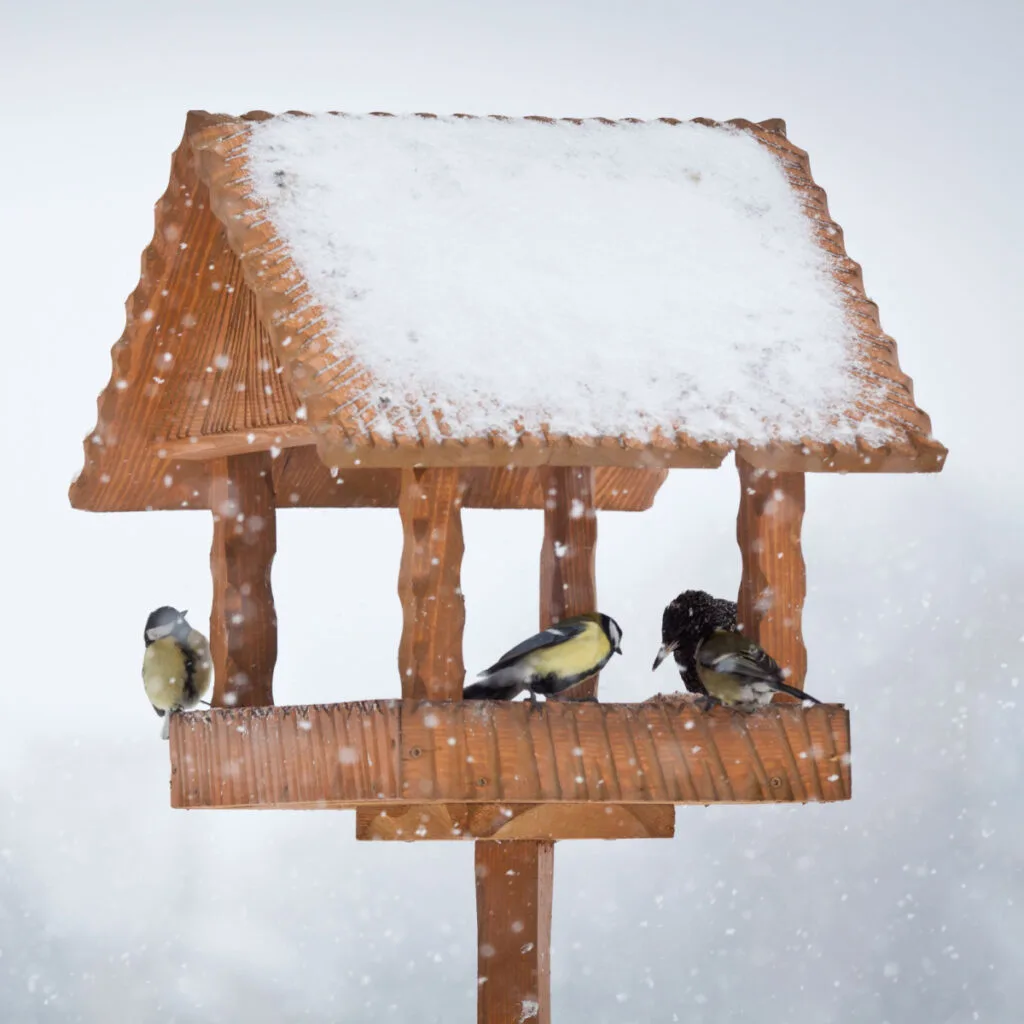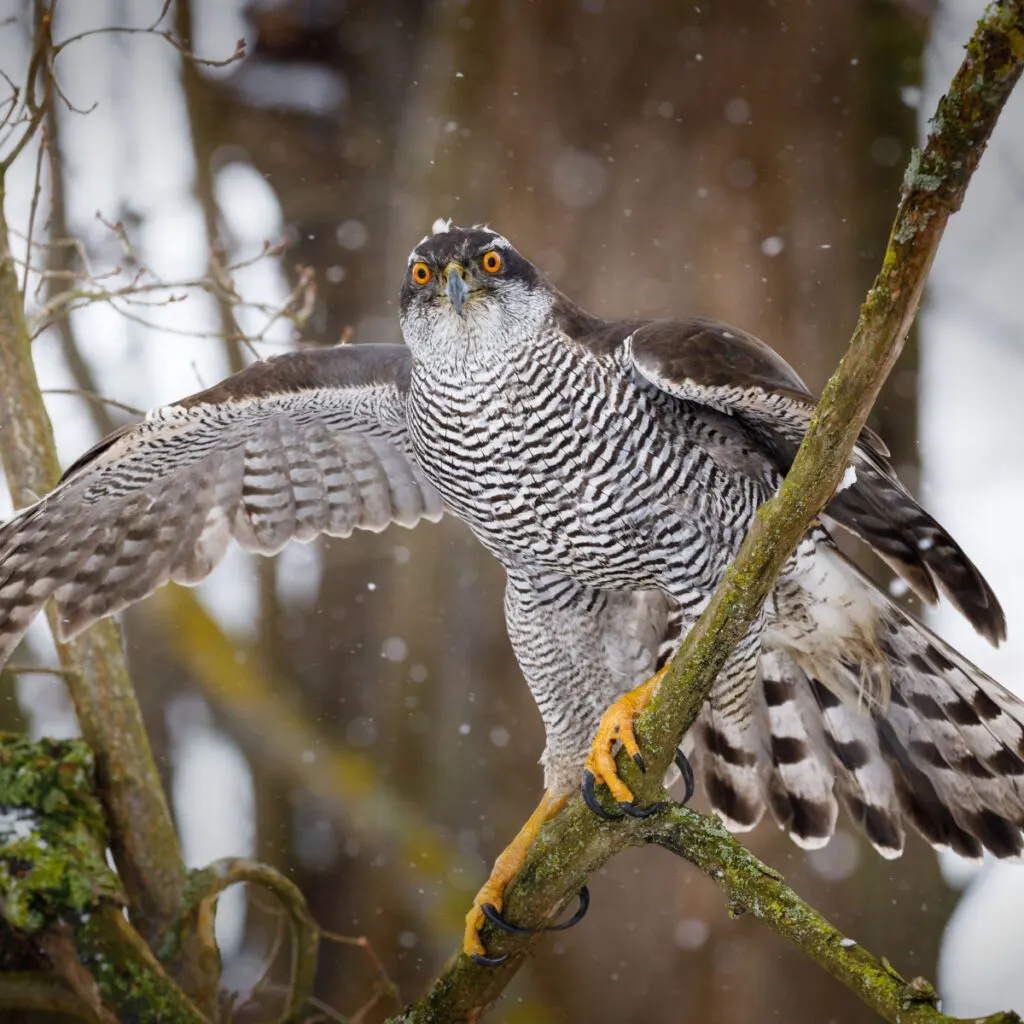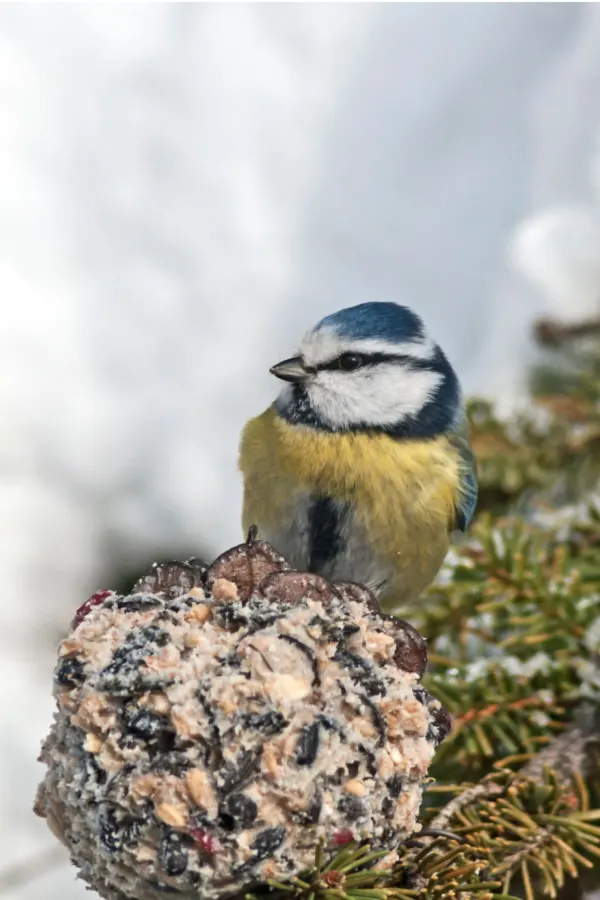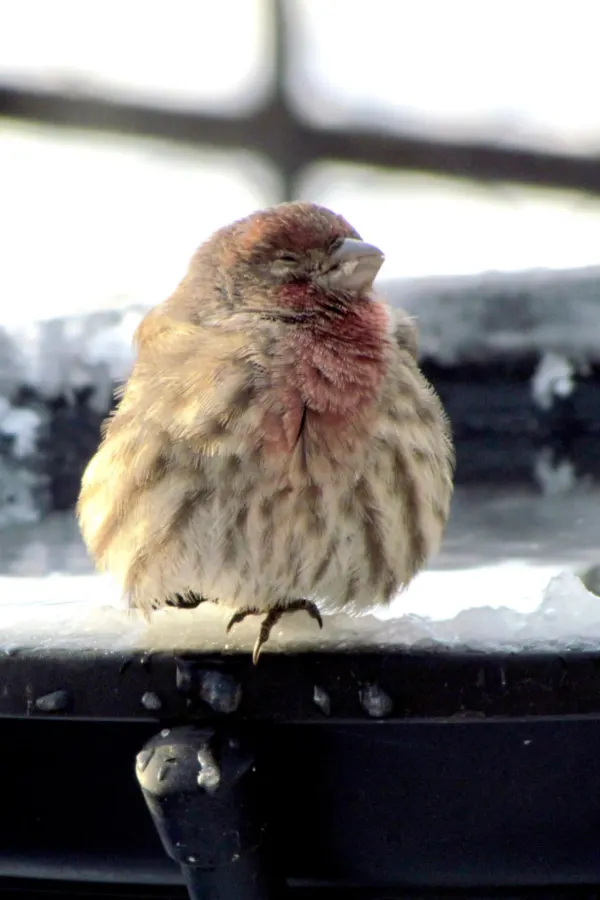There is no harder time for birds to try to survive than when dealing with the harsh, bleak, cold conditions winter can bring – and there is no better way to help them through it than by feeding them high energy foods on a regular basis!
Winter is extremely tough on birds that do not migrate to warmer areas. Not only can it be hard to find adequate shelter from the cold and precipitation, they have to be wary of looming predators that are scavenging for food sources as well.
Unfortunately, to hawks and eagles, birds can stand out like a sore thumb in the bare and often white backdrop that winter can bring. It’s also far easier for cats and other animals to find them as well.

Making matter worse, food and reliable sources of food can become quite scarce. If all of that wasn’t enough, the more and more developed areas become, the less natural habitats there are for overwintering birds to find adequate food and shelter.
One thing is for sure, they can use all the help they can get to make it through until spring. And with that in mind, here is a look at the best way to provide food and help birds this winter – and give them the best chance of survival so they can be around come spring to help you with insect control and more!
Feeding Birds In The Winter
The Seeds & Feed Birds Need Most
As the cold weather settles in, birds need and use a lot of calories to stay warm. And one of the best ways to help them is by supplying them with a steady diet of high calorie / high fat food. Not only will it help keep them warm, but healthy too.
Insects that were more than plentiful in the spring, summer and fall have all but disappeared. Likewise, so have all of the fresh berries, seeds and nuts that nature provides throughout the growing season. But there are plenty of options to place in feeders that can give them the fat and nutrition they need.
At the top of the list are black oil sunflower seeds, cracked corn and peanuts. All three are excellent choices for placing in bird feeders in the winter. They provide the nutrition birds need most. Even better, these specific food sources are all loved by a wide range of overwintering birds.

The Power Of Black Oil Sunflower Seeds – Feeding Birds In The Winter
As for the sunflower portion, black oil sunflower seeds are the best choice of all. Although striped sunflower seeds are a good source of nutrition for birds, black oil seeds have nearly double the calorie content. Because of this, they give a much larger boost of energy for birds in a single feeding. Affiliate Link : 25lb. Bag Black Oil Sunflower Seed
Peanuts can be given in the shell or out – and the nuts left whole or in pieces. By providing peanuts in different ways, it helps attract a wider range of birds. Cracked corn is high in calories and is also fairly inexpensive, making it a good addition for the birds and your bank account!
One extra note on feeding, although bird feeders are excellent for feeding, spreading a bit of food on the ground is also important. Many species of birds actually prefer to source their food from the ground and not from hanging bird feeders. It also helps keep bird feeders from becoming overcrowded.

Supplementing Winter Feed – Feeding Birds In The Winter
Sunflower seeds, nuts and cracked corn are great for making up the lion’s share of power packed foods for birds. But where you can really make a big difference is supplementing those mainstay foods with occasional fruits, berries and the most energy laden food source of all – suet blocks.
Adding dried fruits and berries to your feeder a few times a week will not only attract more birds, but also give them a tremendous boost in nutrition with additional vitamins and energy. And in the cold winter, that can be huge for staying warm – and their health and survival!
Even better than berries and dried fruits are suet blocks. In fact, putting out a suet block weekly or bi-weekly can be a lifesaver for birds!
Suet is made from animal fat with nutritious seeds mixed in. The fat provides loads of nutrition and quick energy to scavenging birds. You can easily make your own or purchase suet in blocks or balls. See: How To Make Homemade Suet Blocks
Finally, by simply spreading some chunky or smooth peanut butter on a few pine cones and hanging them from trees, you can make a high energy, fat filled treat that can satisfy and power the hungriest of birds.

Provide A Source Of Hydration – Feeding Birds In The Winter
One of the most overlooked needs for overwintering birds is a source of water. Water is vital in helping a bird keep its metabolism up. Without staying hydrated, they can struggle to burn the calories needed to stay warm. The good news – it doesn’t have to be running or unfrozen water!
Filling bird baths or setting out small pans of water during daylight hours will go a long in helping birds maintain their health. Even if they freeze over, birds can chip at the ice to hydrate their bodies.
If you really want to go the extra mile, you can even purchase bird baths that have electric heaters built-in to keep the water from ever freezing, making hydration quick and easy for birds! Affiliate Link: GESAIL Heated Bird Bath for Outdoors for Winter
Keep Natural Shelters In Place – Feeding Birds In The Winter
Above and beyond providing nutritious food and a source of water, another great way to help birds is to leave natures natural plant protection in place through the winter months. Resist cutting back and pruning ornamental grasses, shrubs, bushes and other perennials until spring.
These areas are perfect for birds to find shelter when snow and ice have all but covered their normal nesting and resting places.

Last but not least, make sure that when you feed you feed consistently. Birds are creatures of habit. If they know there is an available food source, they will keep coming back to it time and time again. Even more, they will come to depend on it!
By keeping feeders filled, you give birds a reliable and safe source of food. This is especially important when the weather turns extremely cold or snowy. As the snow piles up, sometimes the only food source is a filled bird feeder.
Here is to feeding your birds this winter – and to keeping them safe, healthy and alive!
Follow Our Facebook Page For Great Gardening Tips And Advice! This Is My Garden Facebook Page
This Is My Garden is a garden website created by gardeners, for gardeners. Jim and Mary Competti have been writing gardening, DIY and recipe articles and books and speaking for over 15 years from their 46 acre Ohio farm. They publish three articles every week, 52 weeks a year. Sign up today to follow via email, or follow along!
